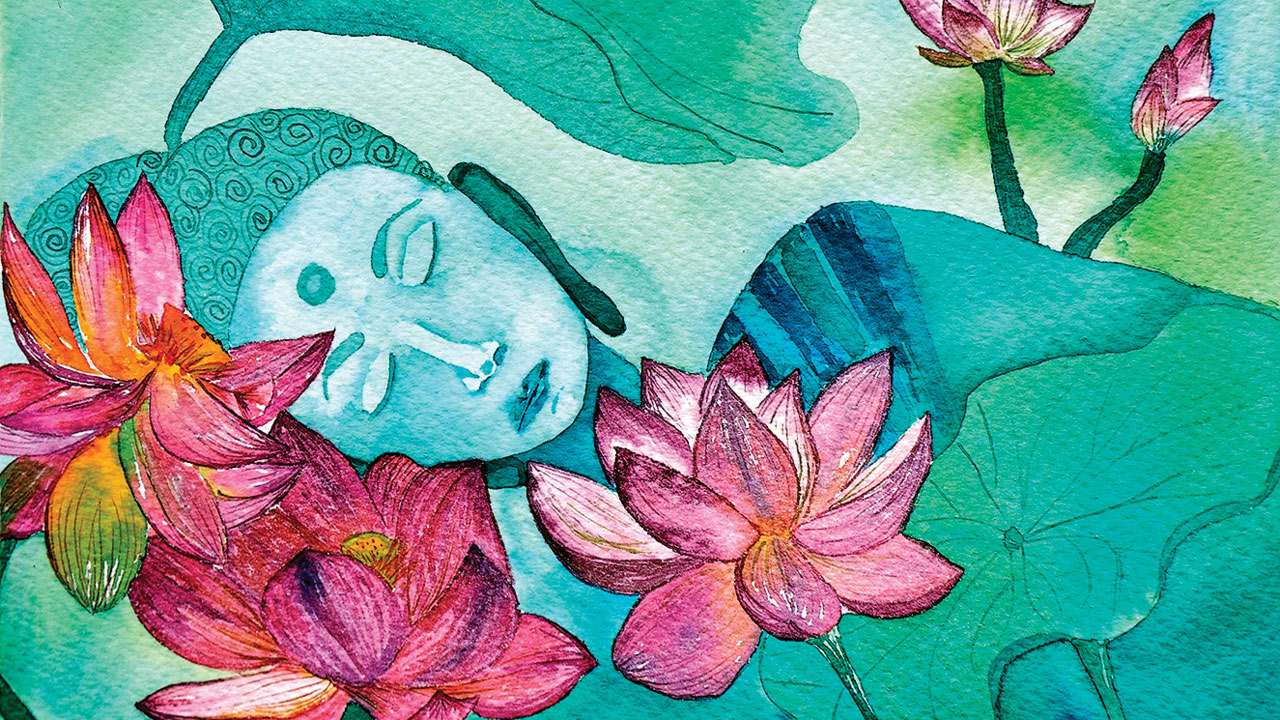
The ‘Lotus’ has inspired much in our literary writing. The lotus bud has been compared to the eye — ‘kamalnayan’ for a man, ‘kamalnayani’ for a woman. A lotus in full bloom, meanwhile, is compared to a radiant face, called the laughing lotus or ‘kamalahaasan’. In Abhigyan Shakuntalam, the heroine writes a letter to her beloved, King Bharat, on a lotus petal, and the feet of the pious or the exalted are called ‘charan kamal’ aka lotus feet. One can go on citing examples drawn from our literature and also from our paintings and our architecture where the form of the lotus bud and lotus bloom have inspired countless depictions.
In this essentially speculative piece, we will try to construct a plausible explanation for the popularity of the lotus as a symbol of purity.
Our story would go back to the times when we, as a people, were still wanderers, gatherers and hunters, constantly on the move and forever in search of food, or maybe we had begun to settle down and to practice rudimentary agriculture. Religion as we know it now was yet to be born. Tribal identities, customs, totems and taboos, rituals of sacrifice, etc. were gradually evolving.
We invested everything that we did not understand with magical or supernatural powers, this is the age of animism. We believed that everything, even things that we consider lifeless like rocks, mountains, pebbles, earth, sky, clouds, rivers, lakes, ponds, had life and was animated. Because everything was alive and had emotions, it could become happy or get angry, it could be benevolent or malevolent, things could be pleased and placated by offerings, and when happy, they could help us.
It is in a time like this that someone comes across a pond of stagnant water, filled with dead and decaying leaves, the water of the pond filled with slushy mud and crawling with all manner of creeping creatures, and amidst all this, there was this beautiful lotus, swaying in the gentle breeze.
We believe that this person who first noticed the beautiful lotus was a woman. We think it was a woman because women notice these things, much before men do. So she saw the filth, she saw the beauty blooming within and thought to herself — you can rise above all this filth and be pure, thus birthing the idea of the lotus as a symbol of purity. One of the names for the lotus is Pankaj — Born out of the Mud.
It is difficult to say when exactly the veneration of lotus began, it must have started at a time when we did not have a calendar, with its years, months, weeks, or 24-hour days. All these things existed, but we were not yet aware of them, so it is not going to be easy to put a date on it. But in the way things evolve, we can clearly say that the veneration of the lotus has to predate the times before we imagined Gods.
Let us try to understand this a bit more. As we began to settle down to agricultural activity and domesticate animals and plant seeds, we learnt a whole lot of things that we did not understand earlier, and that which we did not, we attached a supernatural power to it. The more we began to explore and observe, the more things we discovered that we did not understand, and we began to imagine a heaven that was busy with many Gods looking after different things.
We weren’t alone in imagining a heaven peopled by many Gods, the Mayans, the Incas, The Egyptians, The Sumerians, The Chinese, The Babylonians, The Romans, The Greeks and every other ancient civilisation created her own theory of creation of the Earth and imagined a pantheon of Gods. Each ancient civilisation had their own Gods of Creation, of Birth and Death and of Rain and Thunder. There were Mother Goddesses and those of harvests, etc. Then there were Gods of Destruction, Disease and Pestilence alongside Gods of Health, Prosperity, and Love.
What has all this to do with the lotus? We will take it up in our next piece.
The author is a historian, and organises the Delhi Heritage Walk for children and adults